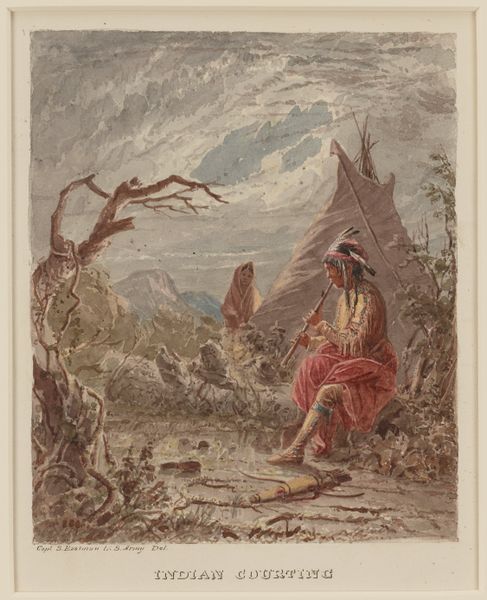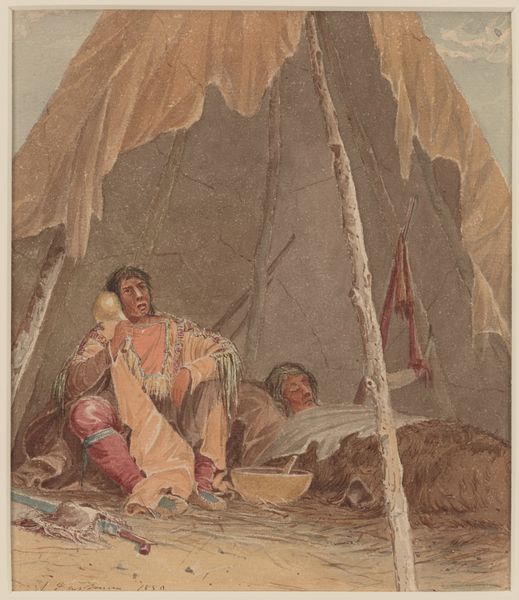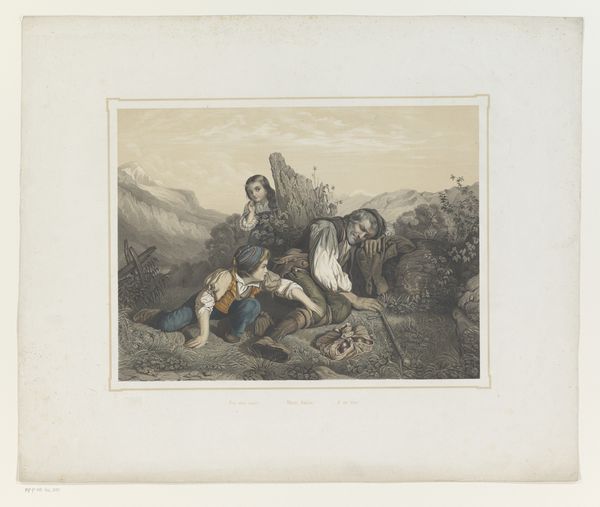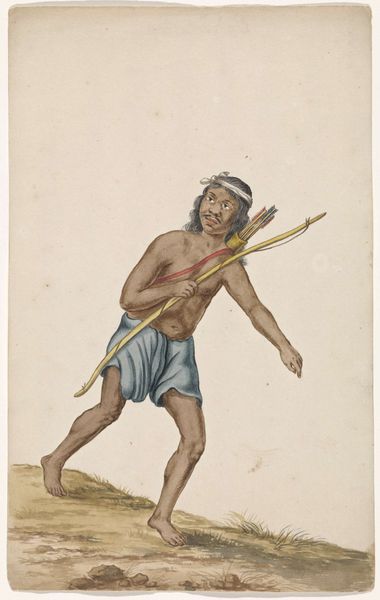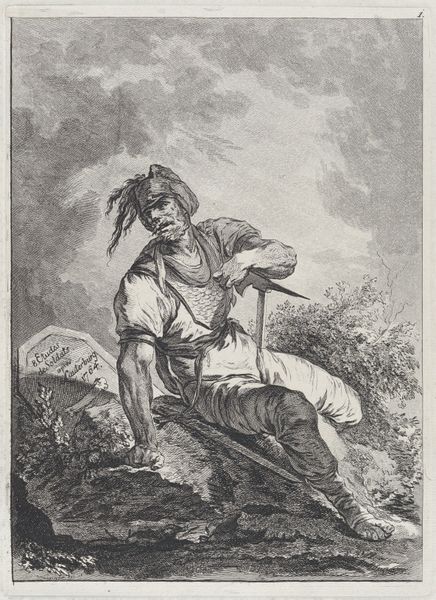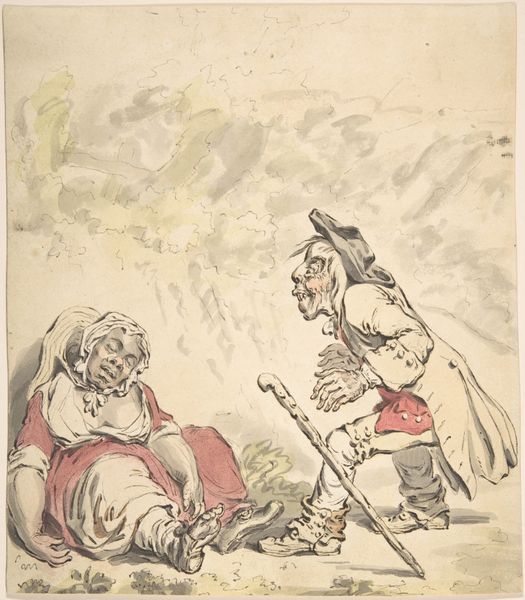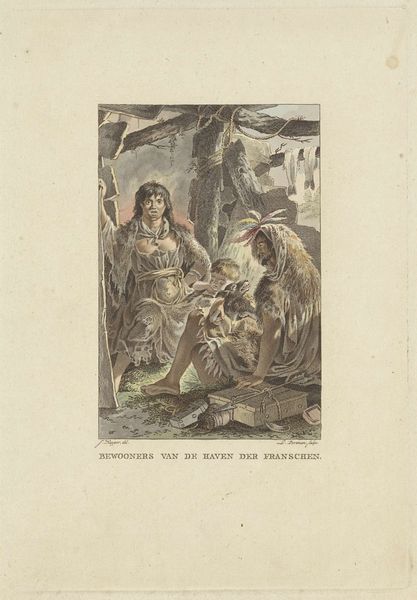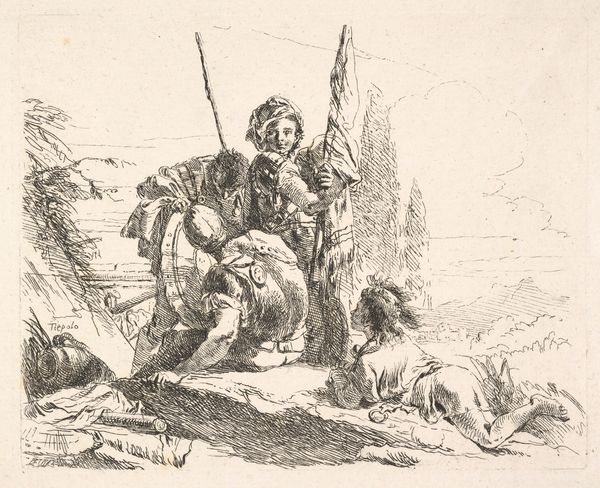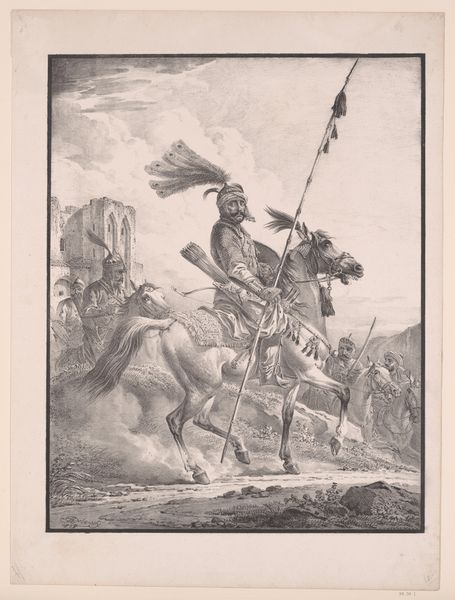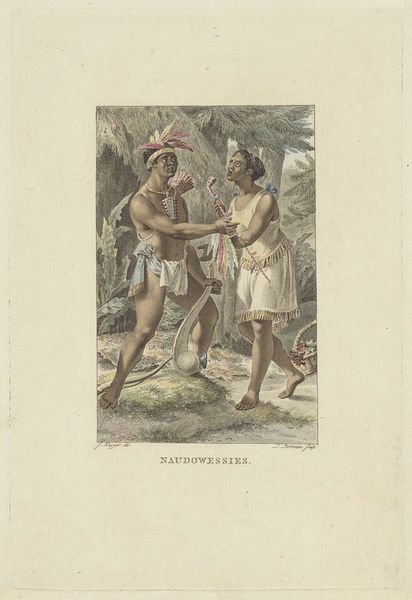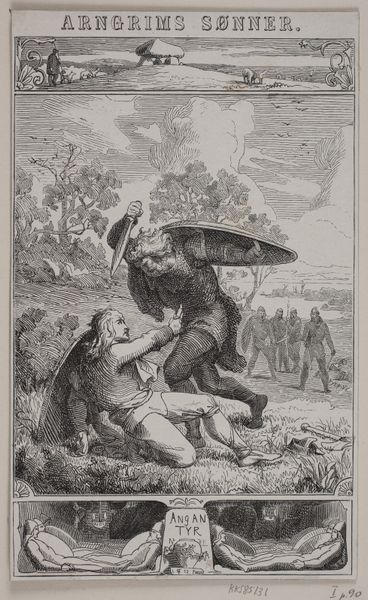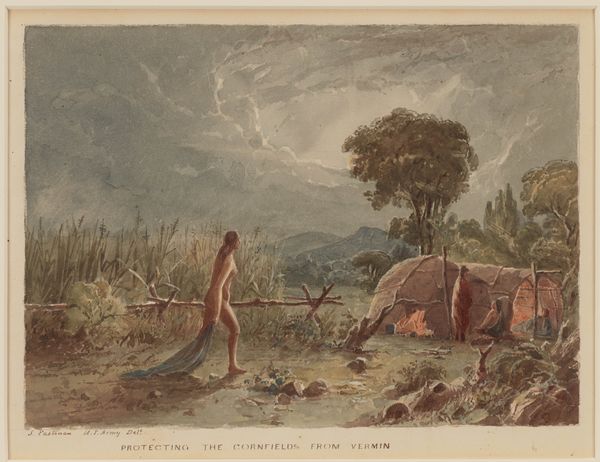
painting, watercolor
#
narrative-art
#
painting
#
landscape
#
figuration
#
watercolor
Dimensions: 8 × 6 9/16 in. (20.3 × 16.7 cm) (image)12 5/8 × 9 5/8 in. (32.1 × 24.4 cm) (sheet)21 1/2 × 17 9/16 × 1 1/8 in. (54.6 × 44.6 × 2.9 cm) (outer frame)
Copyright: Public Domain
Here we see "The Death Whoop," a watercolor by Seth Eastman. Immediately striking is the stark contrast between the victor standing over his defeated foe. The composition is structured around a dramatic diagonal, from the fallen figure in the lower right to the triumphant Native American man in the upper left, emphasizing the power dynamic. Eastman uses muted earth tones to create a scene that feels both realistic and romanticized. However, the cultural context complicates this scene. The man holds aloft a scalp, a visual element that functions as a potent signifier of conquest and savagery. Eastman's work reflects, and perhaps reinforces, prevalent 19th-century attitudes about Native American culture. The artist invites us to consider how images can perpetuate stereotypes and shape perceptions. Ultimately, "The Death Whoop" is more than just a depiction of a historical event; it's a complex visual statement that reflects the historical and ideological perspectives of its time, prompting us to question the narrative it presents.
Comments
minneapolisinstituteofart almost 2 years ago
⋮
U.S. Army Captain Seth Eastman was a trained artist who served twice on the frontier at Minnesota’s Fort Snelling, from 1830 to 1832 and again from 1841 to 1848. His extensive firsthand, peaceful encounters with Native Americans gave him extraordinary opportunities to observe their customs and practices, which he documented in his art. He became known as the “pictorial historian of the Indian.” This watercolor belongs to a series that he made between 1849 and 1855 to illustrate Henry Rowe Schoolcraft’s massive survey, "Historical and Statistical Information Respecting the History, Condition and Prospects of the Indian Tribes of the United States" (Philadelphia: Lippincott, Grambo & Co., 1851-57). Mia’s 35 watercolors and drawings for the project represent an astounding array of subjects: muskrat hunting, fish spearing, pest control, rice gathering, maple sugaring, shelter, travel, medicine, mourning, dancing, civics, and topography. With such variety and Eastman’s well-informed clarity of depiction, they constitute an unparalleled visual account of native ways in our region.
Join the conversation
Join millions of artists and users on Artera today and experience the ultimate creative platform.
